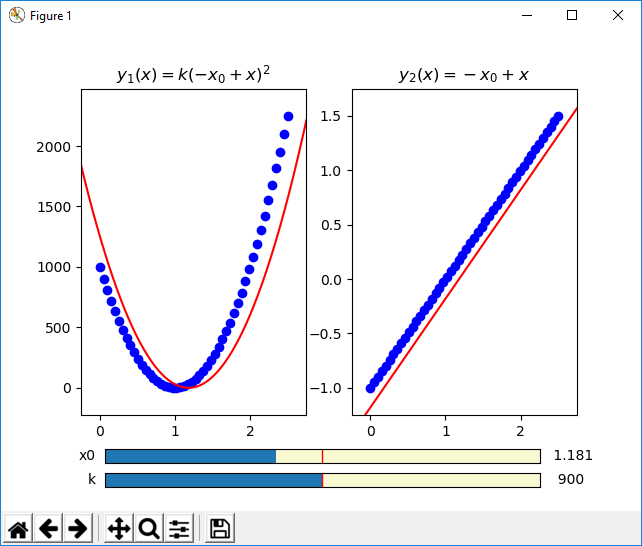Example: Interactive Guesses Vector Model¶
Below is an example in which the initial guesses module is used to help solve two-component vector valued function:
# SPDX-FileCopyrightText: 2014-2020 Martin Roelfs
#
# SPDX-License-Identifier: MIT
# -*- coding: utf-8 -*-
from symfit import Variable, Parameter, Fit, Model
from symfit.contrib.interactive_guess import InteractiveGuess
import numpy as np
x = Variable('x')
y1 = Variable('y1')
y2 = Variable('y2')
k = Parameter('k', 900)
x0 = Parameter('x0', 1.5)
model = {
y1: k * (x-x0)**2,
y2: x - x0
}
model = Model(model)
# Generate example data
x_data = np.linspace(0, 2.5, 50)
data = model(x=x_data, k=1000, x0=1)
y1_data = data.y1
y2_data = data.y2
guess = InteractiveGuess(model, x=x_data, y1=y1_data, y2=y2_data, n_points=250)
guess.execute()
print(guess)
fit = Fit(model, x=x_data, y1=y1_data, y2=y2_data)
fit_result = fit.execute()
print(fit_result)
This is a screenshot of the interactive guess window:
By using the sliders, you can interactively play with the initial guesses until it is close enough. Then after closing the window, this initial values are set for the parameters, and the fit can be performed.
